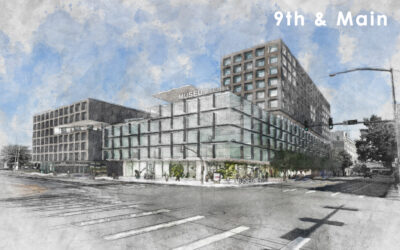Arkansas is brimming with investment potential, especially within the newly designated Opportunity Zones. These zones lie within economically-distressed communities and, if investments in these areas meet certain requirements, they can qualify for tax incentives. By eliminating some tax requirements, companies and businesses have an incentive to help revive these distressed communities through real estate investments, economic development, job creation, and reap financial benefit.
The aforementioned tax incentives were created by the Tax Cuts and Jobs Act of 2017. Arkansas was the first state to conform the state tax code to mirror the federal incentives on February 26, 2019. Arkansas has 85 Opportunity Zones that were nominated by Governor Hutchinson and approved by the Secretary of the U.S. Treasury. Eight of these zones lie within Pulaski County and may have high growth potential. These areas include a large area spanning Little Rock covering the Clinton Presidential Center, East Village, and the Bill and Hillary Clinton National Airport. Another area is in North Little Rock and covers Dickey Stephens Park, Simmons Bank Arena, and the Argenta Arts District.
Anyone, from an individual tax payer to a large corporate entity, can establish and invest in a Qualified Opportunity Fund (QOF) with capital gains if they meet a set of guidelines set by the statute and Treasury. Three types on investments qualify: partnership interests in businesses that operate within Opportunity Zones, stock ownership in businesses that conduct a majority of their operations within Opportunity Zones, and property or real estate located within an Opportunity Zone.
Some benefits include the ability to defer tax gains, and if the investment is held for longer than five years, there is a 10 percent exclusion of the deferred gain. If it is held for more than seven years, the exclusion is 15 percent. If the investor holds the fund for at least 10 years, the investment becomes eligible for an increase in basis of the QOF equal to its fair market value on the day the investment is sold or exchanged, meaning the investor pays zero taxes on any gains from the investment. So, if a $1 million investment is made, and the investment appreciates to $1.8 million over the 10-year period of time, the investor is only responsible for paying tax on the original $1 million investment. The deadline to achieve the full maximum benefit from an investment in an opportunity zone is December 31. On this date, the 15 percent capital gain tax benefit expires as the seven-year time frame necessary to receive the full 15 percent benefit by 2026. However, investments can still be made in these zones in the years to come that will still see tax benefits.
Investors are eligible for these tax benefits without needing to live, work, or have a business in the opportunity zone. This provides Arkansas a unique opportunity to attract big, national investors to already existing businesses and to start ups. This can bring high-tech jobs to lower income communities. For investors, it provides an opportunity to invest in advanced technology that takes years to develop at a low-risk.
While these tax breaks are not industry specific, some industries in Arkansas do benefit more than others. These include aerospace, technology, manufacturing, timber, and corporate and shared services. Growth in these areas can create more jobs, which in turn supports the economy of these distressed communities. Over time, these communities will develop and the people living in them will benefit from reduced levels of poverty.
There’s a great opportunity in Arkansas for investors to take advantage of tax incentives while also lifting up a community in need. Opportunity Zones are an appealing long-term investment that also helps impact the quality of life for people living and working within the areas.
This article was originally published in AMP News Online.




